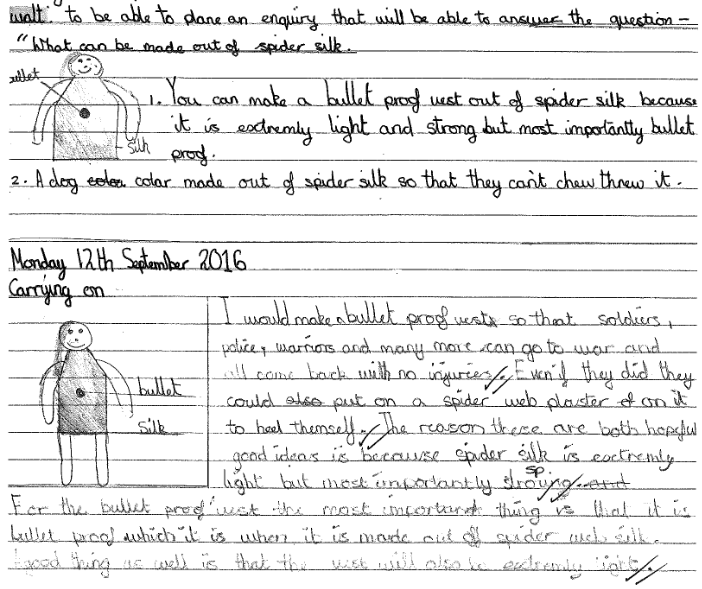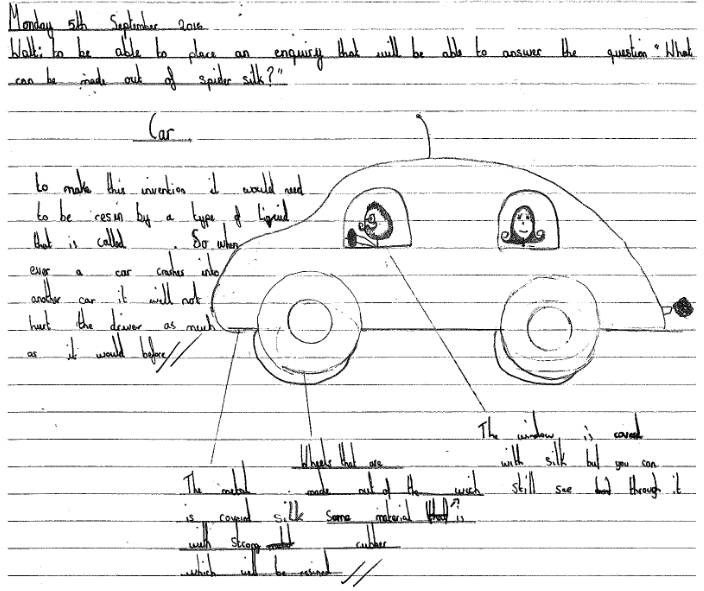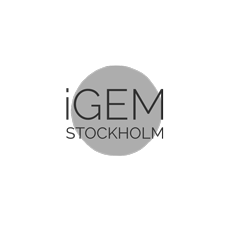Public Engagement and Education
Sharing new means and methods of teaching and learning with students of all ages.
Developing teaching resources has been integral to our Human Practices focus; we wanted to spread the word about synthetic biology to those who may not have encountered in detail the options this field offers yet. Furthermore, we wanted to offer safe insights into how individuals could gain access to this knowledge and use it wisely.
In fact the scope of our efforts - generating multiple platforms for sharing educational material and making new knowledge and practical skills accessible - became our iTECH model: integrating activities in the areas of TEACHING, EVOLVING, COMMUNITY and HEALTH.
Teaching
Our A-level Teaching Programme
Our education programme incorporated work on 4 main areas (detailed below). For each area participants had to imagine themselves in a position of authority and respond to an issue at hand. We also emphasized the importance of ethical decision making. Just because we have the know-how, does it give us the right to continue to modify our world through biological manipulation, and what are the risks and benefits of doing so.
How does it work?
Each of the first 3 subject areas (health, environment and art & design) constituted 2 separate case studies linked to a variety of resources (videos, scientific articles, images and websites). One main question or task was set in relation to each available case, encouraging students to research specific questions and present an opinion, idea or perspective on one of the two options. For the health area we in fact received such good submissions that we judged these as separate categories in the end!
Each set of 2 cases were left running on the website for a period of 2 weeks, following which work was submitted by email to a central contact point and assessed by the Human Practices team.
Any submission was carefully read and individuals or groups were given personalized feedback by email (we were always impressed with the quality of the pieces entered!).
Rewarding student efforts
Once the students had submitted all their work on the various case studies, we compiled their efforts in each category and presented them through igem.se.
Here, viewers were invited to vote via an integrated survey on the best work in each field; the overall intention was to select winners via a public vote.
We circulated awareness of the students' work on igem.se to university students at KTH who were undertaking studies in relevant subject areas, but the invitation to read and comment on the submissions was also open to anyone interested.
In the following sections, the case studies are described, and we have included excerpts from winning pieces in each category. To see the case studies in detail, check out the link below.
The Case Studies
Synthetic biology in health related concepts
Case 1: Appealing to your hospital director to support the use of 3D printed biological organ replacements for a young patient in a serious motorcycle crash.
Below is an excerpt from the winning piece:
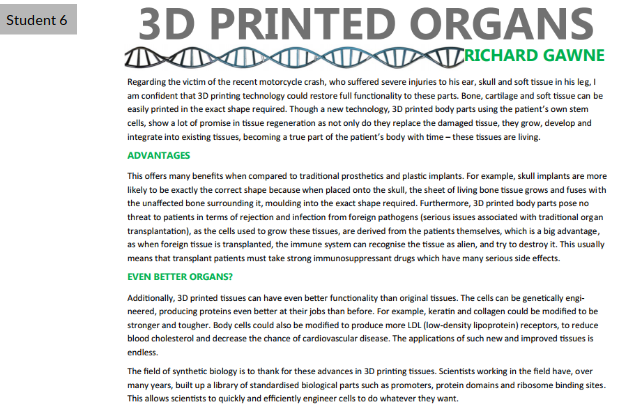
Case 2: Preparing a presentation in a school where you are a biology teacher, informing your colleagues about the risks of a new 'home-made estrogen biolab' which has been set up locally.
Below is an excerpt from the winning piece:
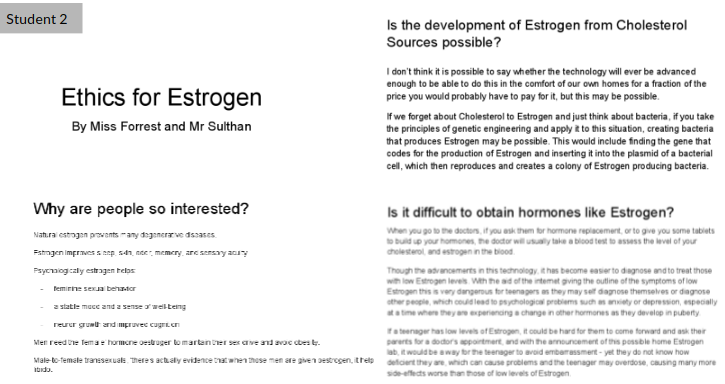
Environmental sustainability
Case 3: Preparing a project plan for your boss drawing on your research on ways synthetic biology can be used to detect and reduce heavy metal contamination of water used for drinking and cooking. Particularly considering the pros and cons of such methodology.
Case 4: Preparing a presentation to classmates about the potential impact of synthetic biology on conservation of the natural environment, taking into consideration the risks and benefits of recent biological innovations: just because we can...should we?
Below is an excerpt form the winning piece:
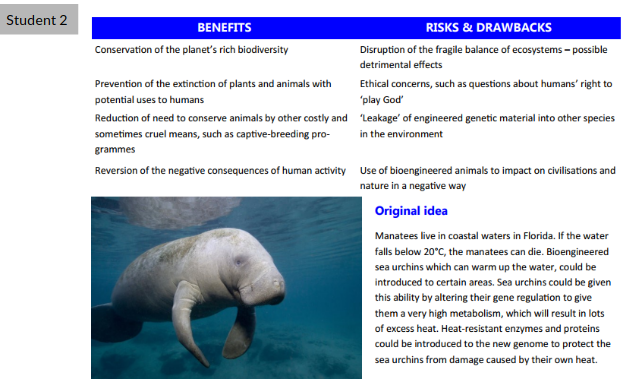
Art, design and architecture
Case 5: Composing a motivational piece of writing about the risks or the benefits of 'living architecture' to solve world housing pressures.
Case 6: Writing a campaign excerpt on how industrial design will change due to synthetic biology, including one idea for a futuristic product which has superior qualities thanks to biological modification. Particular focus should be on making new products acceptable in society and your views on this.
Below is an excerpt from the winning piece:

Antibiotic Resistance: integrating Teaching and SMITe
The 4th component of this teaching programme was structured differently; we conducted a preliminary review of the students abilities to weigh up ethical conundrums through the first set of case studies in weeks 1 and 2 (ethics for estrogen). Then, for this final component in September we reversed the teacher-pupil roles by getting students to design their own case study, centered on issues raised by the threat of antimicrobial resistance. We felt it was important to do this when introducing the main bulk of the ethical discussion our SMITe project centres around.
Previously students had been presented with scenarios to think about and respond to, however, as reflected in the case of increasing rates of antibiotic resistance globally, we cannot simply wait for the situation to be presented to us... we all need to think ahead and take responsibility for the impact of our actions and lifestyles on the world. The task set was as follows: (click the link to see in full)
The need for SMITe: addressing the global threat of antibiotic resistance
Case 7: Consider the issues raised by increasing antibiotic resistance (including the benefits novel therapies like SMITe may offer) in order to design your own advertising campaign to help combat the problem by raising awareness.
Requesting that the students present their work as an advertising campaign warning against antibiotic resistance enabled them to demonstrate skills in persuasive writing under a popular science construct and also to display their creativity.
To finalize this fourth component, we reviewed all the submissions and chose the best one to present on our Wiki (see below).
Winning piece: The Necessity of New Antibiotic Drugs
This student also produced a motivation for their campaign:
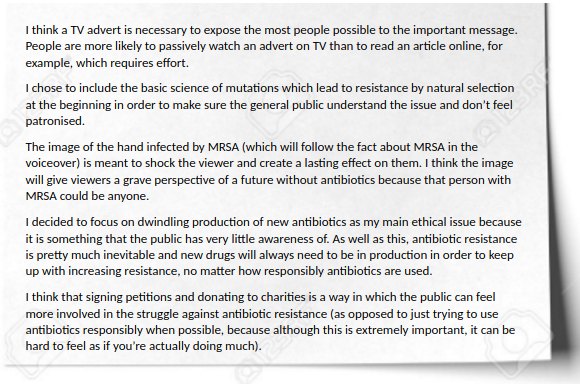
Student Feedback
In a reversal of the usual situation of trying to seek feedback on teaching courses, we found that the students volunteered comments and thoughts about our programme. Most often these were sent alongside submitting their work.
Below are a few examples of the comments we received in this way, which we found to be a great testament to the interest which can be generated by introducing something a little different to the standard school curriculum.
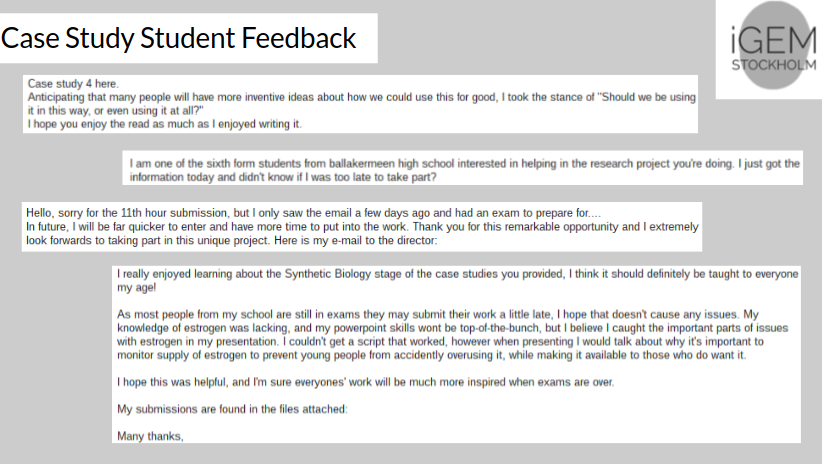
We are extremely grateful for the hard work of the students who took part in this exercise!
Evolving
With great success, attendees at Stockholm Makerspace took part in three workshops in Autumn 2016 to develop their knowledge and skills in a laboratory setting.
What did we do?
Thanks to the engaging members of Makerspace Stockholm, a unique environment in Sweden, and the willingness of iGEM Stockholm team members to make use of their knowledge, a long-term project to develop the Makerspace biolab was on the table. To encourage people of different backgrounds to see what a biolab can be used for, workshops were held for members of the Makerspace, thus increasing the number of members as well. Also, early in the process, ways of creating a long-term relationship between Makerspace and current as well as future iGEM teams were discussed with the goal of making the attendees independent and 'self-learning'.
The Workshops
The purpose of the workshops held at Makerspace was to teach the participants how to use and work with basic lab equipment in order to pursue simple but important experiments in synthetic biology. By attending all three workshops (with many more to come) this would be possible even for the least experienced person!
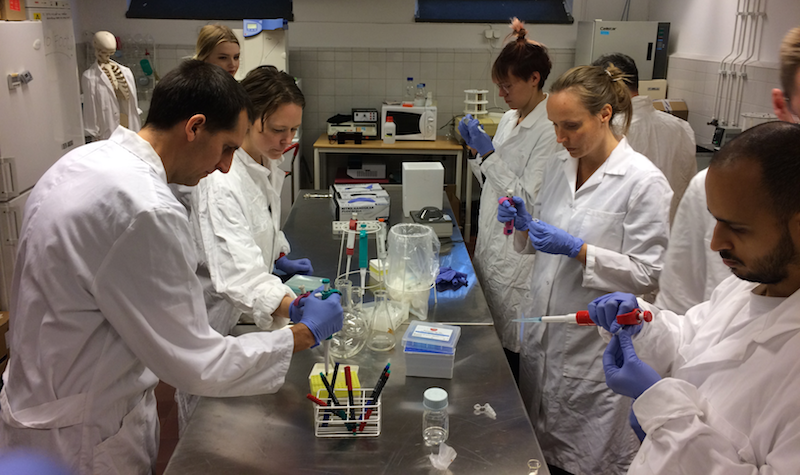
Workshop 1 - Lab Basics
In this workshop, held the 2nd of October 2016, participants had the opportunity to learn how to use a pipette and different microscopes. The workshop opened up with a presentation by Sina from Makerspace and Oscar He from the iGEM Stockholm team where they introduced Makerspace and iGEM, what the outcome of the workshops would be and answered some questions.
The workshop was divided into two stations; pipetting and microscopy. The pipetting workshop had two different tables, one where the participants were given several dilutions with given volumes written on the board. Following the dilution instructions and using different working stock solutions of food colouring with water made up by the instructors, participants had to make the dilutions and lastly make a final dilution but with unknown volumes. This way, participants had to think for themselves how to dilute and create the correct concentrations! To confirm they had reached the right concentration, the absorbance was measured and compared to a pre-made sample by the instructors. This generated a lot of fun and a bit of a competitive spirit!
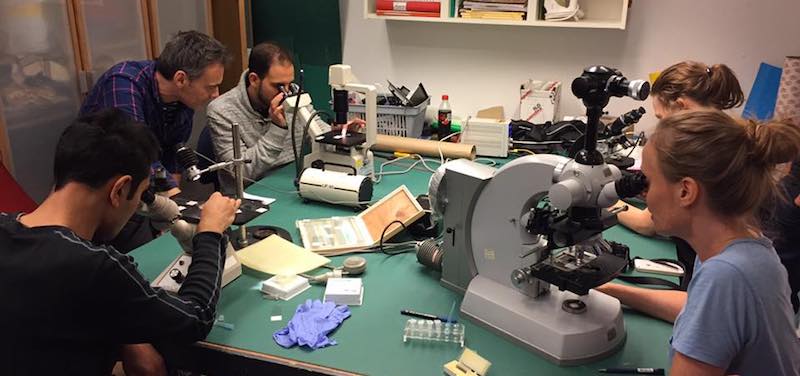
During this time, half of the group had another assignment at another table. Here the participants had to mix coca-cola and milk using pipettes to take certain volumes. To make sure the samples were mixed, they had to use a vortex and in order to separate the precipitate from the solution, they used a table-top centrifuge. Then they used the pipette to take out the water, just as if they wanted to save a cell pellet.
Workshop 2 - Cultivation
The second workshop was held on the 9th of October. This time participants learned the basics of cultivating bacteria in terms of medium, growth, collection and plating, and working in a sterile environment.
Firstly, they prepared medium by mixing broth and water and prepared it in a microwave oven; this was intended for bacteria to be grown upon. Secondly, they poured the medium into two petri-dishes each. While the medium was solidifying, bacterial samples were collected by taping different surfaces and then touching the solid medium (agar) with the tape to stick bacteria to the plate. Some people gently pressed their thumb against the agar before and after washing their hands. On the other agar plate participants practiced streaking a bacterial culture (of bacteria from the mud outside the building). The plates were then incubated at room temperature and the results analyzed before the third workshop. The participants got to find out whether there is any difference in bacteria on the thumbs before and after washing their hands!
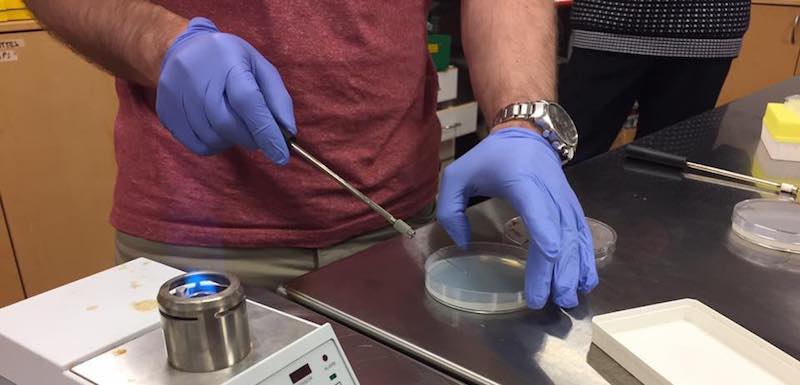
It is fun to see the participants slowly but steadily mastering basic lab techniques and becoming able to perform more advanced experiments.
Workshop 3 - Glowing E. coli
For this workshop, the participants were given the chance to do the "Hello World" of synthetic biology - making a glowing bacteria (bacteria producing the famous fluorescent protein GFP). The iGEM Stockholm team provided Makerspace's BSLI approved lab with competent cells, purified GFP-containing plasmid and antibiotics for the selectivity. Prior to and during the workshop, participants were reminded of the importance of being careful with antibiotics and making sure they are kept and disposed of correctly.
When transforming the bacteria, the protocol, found under Protocols on our wiki, were provided as the recipe for the workshop.
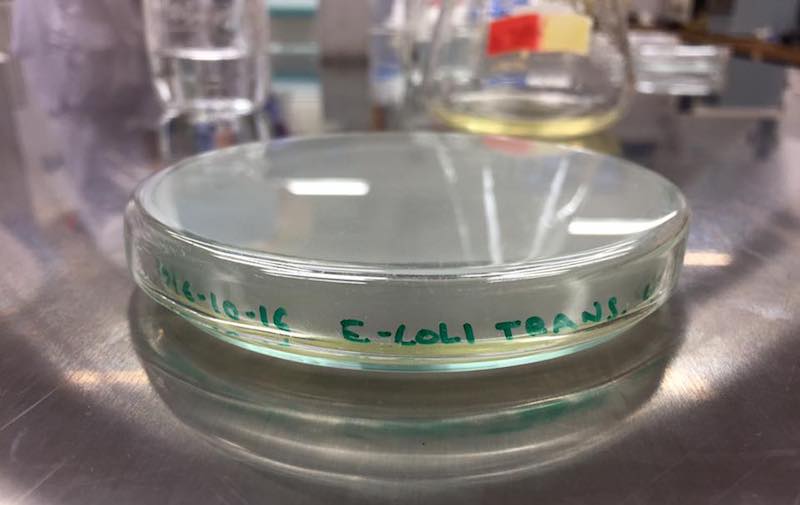
With these workshops, our goal was to reach out to the public and inform both theoretically and practically how to design, perform and analyse important experiments of varying difficulty in lab work. To present the success of the engagement with Makerspace, we have summarized statistics based on all surveys given out after each workshop. The participants were asked if they had learnt something new, if they would recommend the workshops to family and/or friends, if they were planning to join the next-coming workshop and if joining workshop 3, if they had also visited workshop 1 and 2. The results can be seen in the diagram below:
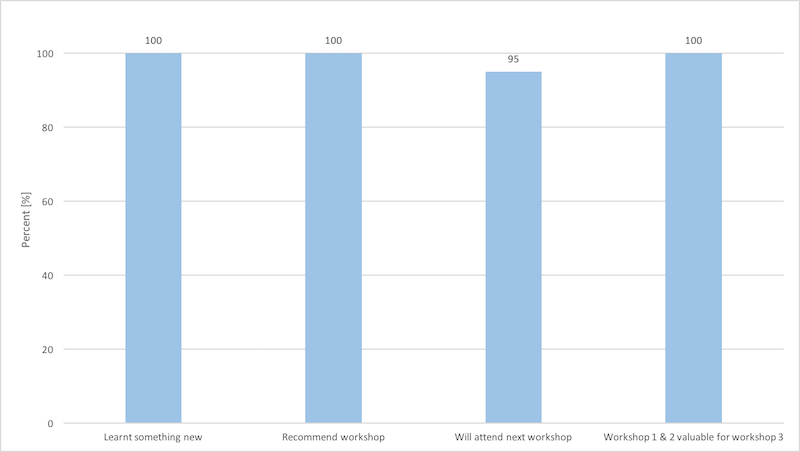
The participants were also asked how interesting and how fun the workshops were on a scale from 1 to 10 and these are the results:
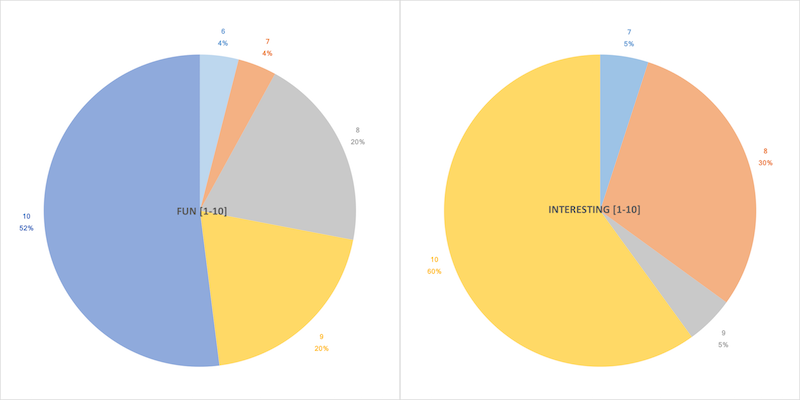
Conclusively, the workshops were very successful and we are looking forward to arranging more workshops to make Makerspace evolve even more. Not only was this a great experience for the team in having to explain and instruct in the most pedagogical way possible - reaching out to everyone is important - but also for the participants themselves for doing something completely unique in Sweden.
Community
Our Primary School Creativity in Materials programme
We reached out to a primary school (students aged 5-11) and targeted a class of 9-11 year olds at the beginning of their school year to undertake a project considering the application of different materials for different products and uses.
This project had a totally different pitch to the case studies for older students and the Makerspace workshops we had planned. Of course it was a far cry from the realms of our usual work too, and this made it all the more challenging to prepare!
What did we do?
We decided to base this project fully on our wet lab work, but at a very basic level. We introduced mainstream concepts in material properties (why we choose which materials for which purpose), before evolving this into another creative exercise.
We described how and why spider web was a desirable material to manipulate in various ways (such as for SMITe) but also introduced students to a number of ways other scientists around the world have developed and modified spider silk into fabrics or biological materials. This included a video on 'bullet proofing' skin with spider silk, which appeared to influence our audience considerably more than the other resources we promoted!
We communicated this workshop style learning exercise through an online web resource, as we had also done for the older school students, however this time the time frame was dictated by individual teachers.
The final part of the exercise was to design a futuristic use of spider silk and or think of a way another natural material could become useful in society.
We asked for the students’ ideas to be communicated back to us, with the overall endeavour to further develop some of the best concepts and feed our interpretation back to the students. With this aspect we aimed to show how they could be instrumental in shaping our future lifestyles. The school were delighted to be involved in our project and fitted the work in alongside their focus on ‘aspirations’ and basic sciences.
Innovation comes in all formats and the resulting ideas from the students were varied to say the least:
Spider silk to be incorporated into an iPhone screen cover or case, a bulletproof 'skin' to line soldiers helmets in combat, and spider silk incorporated into a grapple for rock climbing were among the suggestions- see Integrated HP for more details.
Two examples of student's work are shown below.
